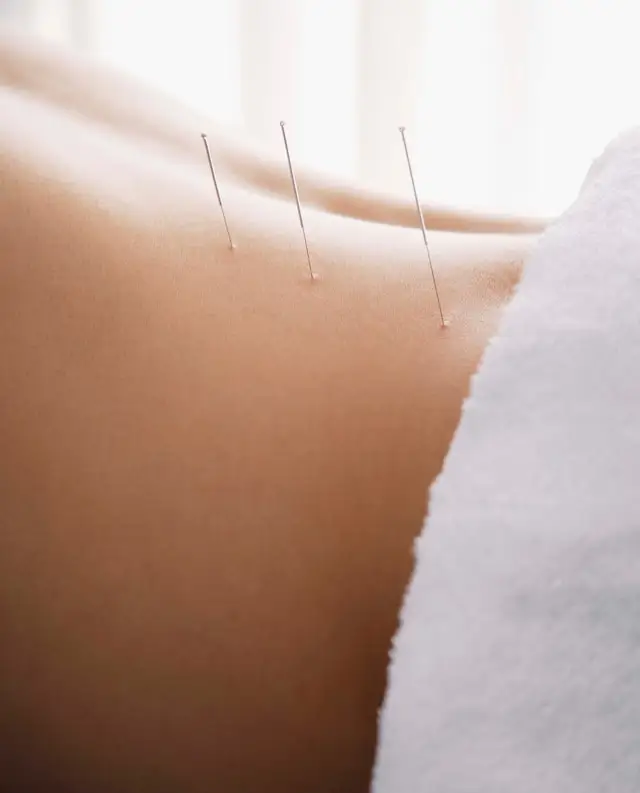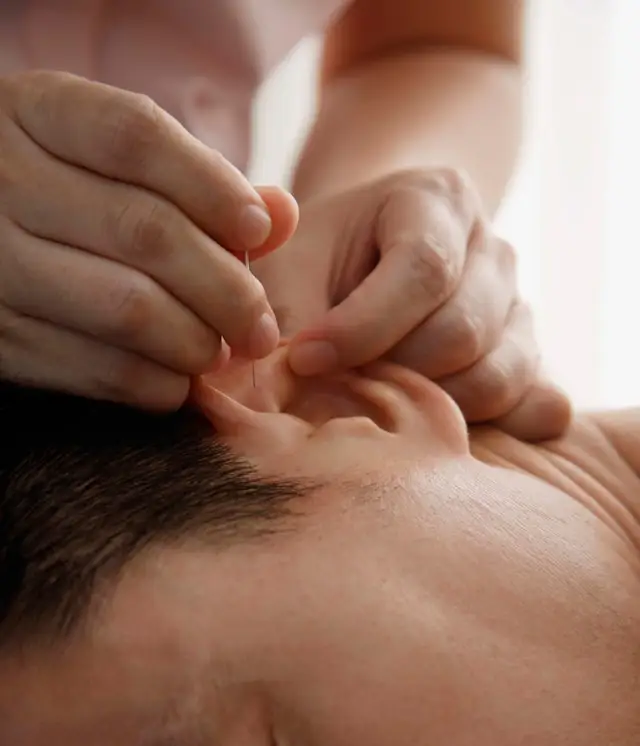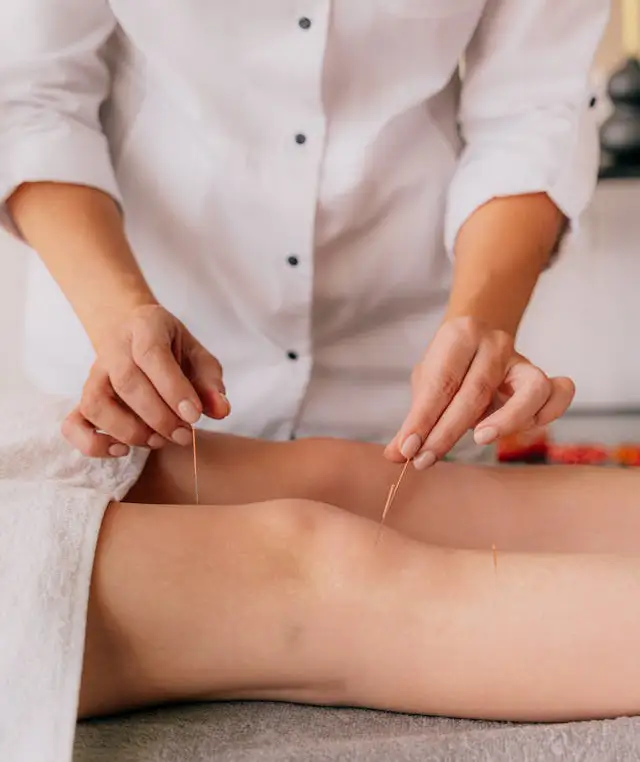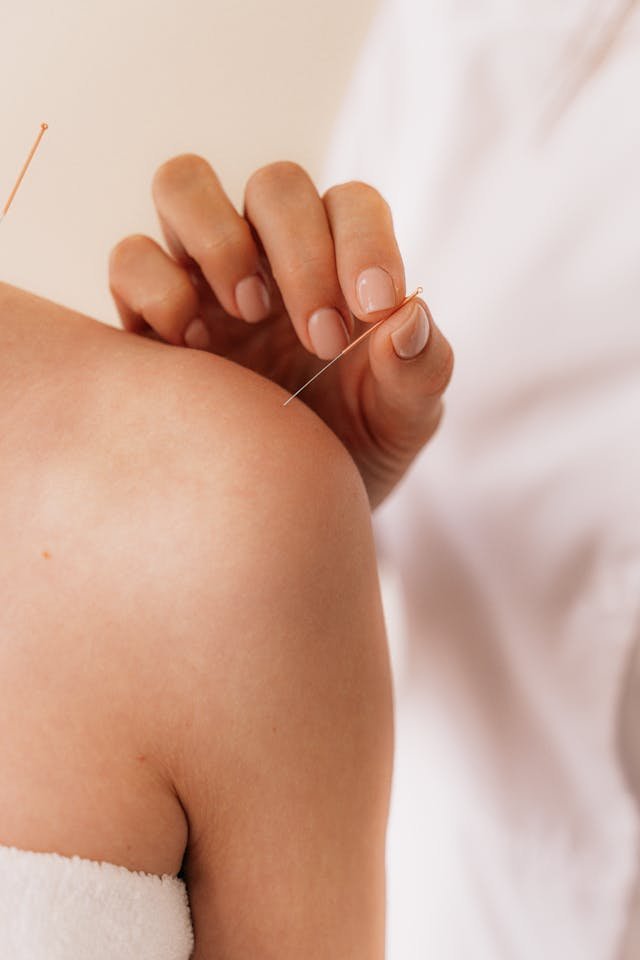ACUPUNCTURE
Exploring the Benefits of Acupuncture: A Comprehensive Guide
Have you ever wondered how a treatment involving thin needles could offer relief from various health issues? Acupuncture, an ancient practice rooted in traditional Chinese medicine, has gained popularity worldwide as a complementary and alternative medicine approach. This holistic treatment targets both physical and emotional aspects of well-being, offering a comprehensive solution for numerous health concerns.

Understanding Acupuncture
Acupuncture is an alternative medicine technique with a rich history dating back thousands of years. It involves the insertion of thin needles into specific points on the body, known as acupuncture points, to treat various health conditions. In fact, millions of acupuncture treatments, including medical acupuncture, are administered each year, from China to the United Kingdom.
While the insertion of needles may seem painful to some, skilled acupuncture practitioners are key in managing any associated discomfort.
The Concept of Qi &Meridians
At the heart of acupuncture lies the concept of “qi” (pronounced “chee”) and meridians, which are pathways that energy flows through in the body. Traditional Chinese medicine posits that imbalances in this energy flow can lead to illness, and acupuncture aims to restore this balance by stimulating specific points on the body.
This energy-focused approach to health and healing has been practiced for centuries, with its origins in China and widespread adoption in countries like Korea.
The Role of Acupuncture Points
Acupuncture points serve as the foundation for treatment, as these specific locations on the body are targeted to stimulate and balance the flow of energy. Each point is connected to other points through energy pathways known as meridians, which are believed to be linked to various organs and systems in the body.
The sensation of “de-qi” is often associated with acupuncture, as patients may experience numbness or tingling at the needling site.

Acupuncture Treatment Techniques
Manual Manipulation
One common technique used in acupuncture is manual manipulation, which involves the insertion and gentle twisting of needles by hand to stimulate acupuncture points. Acupuncturists use specific finger or hand movements to enhance the energy flow and encourage healing in the body.
The practice of manual manipulation can boost the efficacy of acupuncture treatments, with potential benefits such as pain reduction and enhanced healing.
Electroacupuncture
Electroacupuncture is a modern variation of acupuncture that combines traditional needle insertion with electrical stimulation. By delivering a low-level electrical current through acupuncture needles, practitioners can intensify the treatment, providing potential benefits such as improved pain relief, circulation, and relaxation.
Although electroacupuncture may present potential risks, such as skin irritation or infection, ensuring the practitioner is adequately trained and certified can minimize these risks.
Auricular Acupuncture
Auricular acupuncture focuses on the ear, with the belief that specific points on the ear correspond to various organs and systems in the body. Stimulation of these points through auricular acupuncture seeks to bring the body back to balance and mitigate symptoms.
This technique has been employed to address various health concerns, such as chronic pain, mental health issues, and women’s health.

Conditions Treated with Acupuncture
Acupuncture is widely used to treat a range of conditions, from chronic pain management to mental health and women’s health concerns. Research has shown that acupuncture may be particularly effective in treating shoulder pain and fibromyalgia, while more evidence is needed to support its efficacy for other conditions.

Chronic Pain Management

Mental Health and Wellness

Women’s Health

The Science Behind Acupuncture
Though the exact mechanism of acupuncture is still not fully understood, research has shed light on some of its potential effects on the body. Studies have focused on acupuncture’s interactions with the nervous system, other body tissues, and the potential role of placebo effects.
With an understanding of the underlying science, practitioners can continuously improve their techniques, leading to more potent treatments for patients. One way to achieve this is by staying informed about the latest findings from randomized controlled trials.
Nervous System Interactions
Acupuncture is believed to interact with the nervous system, affecting pain perception and the release of neurotransmitters. By stimulating specific acupuncture points, the central nervous system is activated, resulting in the release of certain chemicals into the muscles, spinal cord, and brain.
This interaction may help to relieve pain, reduce inflammation, and promote overall health and well-being.
Placebo Effects
Placebo effects may play a role in acupuncture’s perceived benefits, as patients’ expectations can influence their experiences. The behaviors and rituals associated with acupuncture treatment, such as the patient’s expectations of the treatment and the practitioner’s attitude, can contribute to the placebo effect.
While some studies have suggested that placebo effects in acupuncture may be significant, others have found these effects to be negligible.
Comparing Acupuncture to Conventional Treatments
Comparing acupuncture to conventional treatments can help determine its effectiveness and potential role in integrative healthcare. Research has indicated that acupuncture may be more effective than conventional drug therapy in addressing pain, such as migraines, and is generally safer with fewer adverse effects in comparison to medications.
As acupuncture continues to gain popularity, its integration into holistic healthcare approaches allows for a more comprehensive treatment of various health issues.

Complimentary & Alternative Medicine Integration
The integration of acupuncture into complementary and alternative medicine practices allows for a more holistic approach to healthcare, addressing both physical and emotional aspects of well-being. Patients can receive an all-inclusive and personalized care plan targeting their specific health needs when acupuncture is combined with other treatments like massage therapy, herbal medicine, and meditation.
As the popularity of acupuncture continues to grow, its role in integrative healthcare becomes increasingly important for those seeking a well-rounded approach to wellness.

Pediatric
Acupuncture
Pediatric acupuncture is a growing area of interest, with research exploring its potential benefits and safety for children. As more parents seek alternative and complementary treatments for their children, acupuncture offers a unique approach to addressing various health concerns.
While acupuncture is generally considered safe for children when administered by qualified, licensed practitioners using sterile needles, more research is needed to form definite conclusions regarding the overall safety of pediatric acupuncture.
Safety & Regulation of Acupuncture Practice
Safety and regulation of acupuncture practice involve the use of sterile needles, awareness of potential risks, and adherence to licensing and certification requirements. Ensuring that practitioners meet specific standards of education and training helps to maintain public health and safety, as well as regulates acupuncture needles.
Acupuncture is considered safe when performed by a qualified practitioner, and strict standards of safety culture and practice should be adopted.
Sterile Needles and Safe Practices
Acupuncturists must use sterile, single-use needles and follow safe practices to minimize the risk of infection. Sterile needles are carefully constructed to ensure they are free of any potential bacteria or contaminants that may cause infection.
Through proper hygiene practices and correct disposal of needles after each use, acupuncturists maintain patient safety.
Potential Risks and Adverse Effects
Potential risks and adverse effects of acupuncture include bruising, bleeding, and, in rare cases, organ injury. Most reported adverse events are minor, with a low incidence rate.
Infections, typically due to bacterial skin contact at the needling site, are the most common adverse effect reported. Awareness of these potential risks can help practitioners and patients make informed decisions about treatment.
Licensing and Certification
Licensing and certification requirements for acupuncturists vary by country and state, ensuring practitioners meet specific standards of education and training. In the United States, licensure typically requires:
• Completion of an accredited acupuncture program
• Attainment of a master’s degree
• Passing an examination offered by a licensing board or organization, such as the National Certification Commission for Acupuncture and Oriental Medicine (NCCAOM)
Acupuncturists uphold a high standard of patient care by complying with these regulatory requirements.

Frequently Asked Questions
Who should not do acupuncture?
Acupuncture should be avoided if you have a bleeding disorder, have a pacemaker, or are pregnant. Additionally, those with an AICD or psychosis/delusions should not receive acupuncture treatments.
Why can’t you shower after acupuncture?
It is not advised to take a sauna or bath after acupuncture, as the intense heat could disrupt the energy reset that has been established. However, taking a hot shower is generally ok.
Does acupuncture work for neuropathy?
Acupuncture has been shown to be an effective treatment for peripheral neuropathy, with fewer side effects than medications. It can re-stimulate nerve fibers in areas that have experienced nerve damage or diminished sensation. Studies have shown that acupuncture can reduce pain, improve nerve function, and improve quality of life for those suffering from peripheral neuropathy. It can also help reduce inflammation and improve circulation in the affected area.
Why does acupuncture work for pain?
Acupuncture stimulates the central nervous system which leads to a release of chemicals into muscles, spinal cord and brain, thus allowing the body to heal itself and providing relief from pain.
What actually happens in acupuncture?
Acupuncture involves inserting very thin steel needles into specific points of the body to restore natural energy called Qi, in order to reduce pain and illness. It is believed that stimulating the central nervous system releases chemicals into the muscles, spinal cord, and brain, which helps to balance the flow of energy throughout the body. It is also widely embraced in Western medicine as a potential treatment for inflammation.

